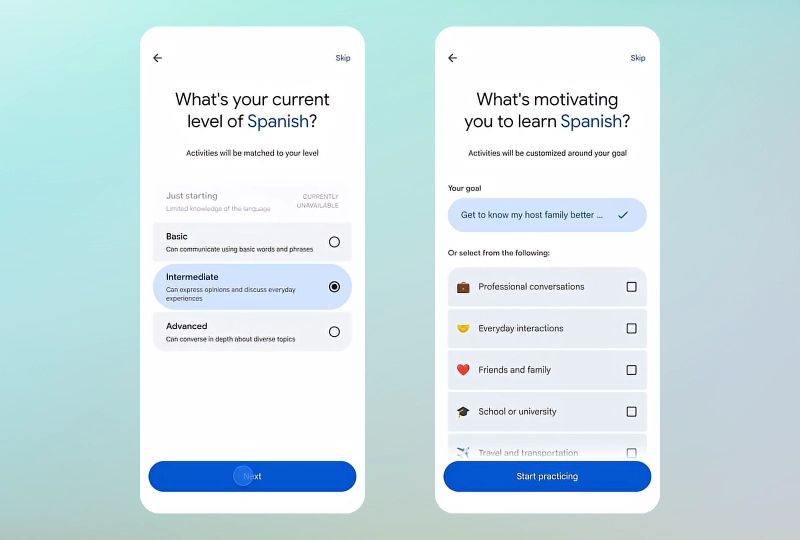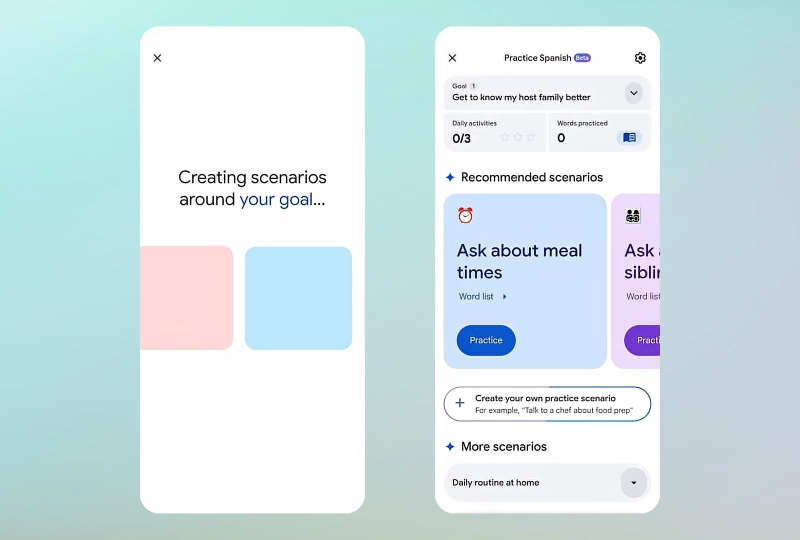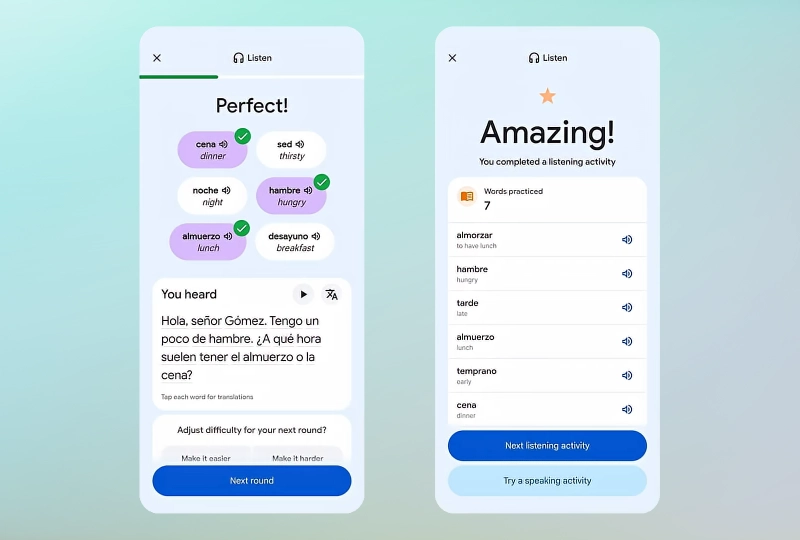Table of Contents
Highlights
- Google Translate AI Powers Real-Time Conversations: Seamlessly engage in over 70 languages with live translations, supported by both audio and on-screen features.
- Noise-Resistant AI Accuracy: Google Translate AI delivers precise translations, even in noisy environments like airports, cafés, and crowded areas.
- Personalized Learning with Google Translate AI: Offers tailored speaking and listening practice sessions to match individual language goals and skill levels.
- Gemini-Powered Google Translate AI: Leverages Google’s Gemini models for enhanced translation quality, multimodal capabilities, and natural text-to-speech experiences.
Google has announced a significant update to its Translate app. It introduces a new Google Translate AI that improves real-time communication and language learning. These capabilities, based on the reasoning and multimodal features of Google’s Gemini models, aim to make conversations across languages feel more natural. They also help users reach their language learning goals with personalized practice tools.
Revolutionizing Live Conversations
Every month, users translate around 1 trillion words across Google Translate, Search, and visual translation tools like Lens and Circle to Search. Now, Google is improving the experience by enabling real-time conversations with Google Translate AI. The latest feature allows users to engage in back-and-forth conversations in over 70 languages, including Arabic, French, Hindi, Korean, Spanish, and Tamil.

The live translation feature provides simultaneous audio and on-screen translations, making communication feel natural. Users can access this feature by opening the Translate app on Android or iOS, selecting “Live Translate,” and choosing their desired languages. The AI models effectively handle pauses, accents, and intonations in conversation, ensuring smooth interaction without the need for constant manual switching. This ability makes complex multilingual conversations effortless with just a single tap.
Enhanced Voice Recognition for Real-World Use
One of the standout aspects of the new live translation feature is its ability to function effectively in challenging environments, such as airports or noisy cafés. This is accomplished through advanced voice and speech recognition models that can isolate sounds, providing precise translations even in environments with significant background noise. These models ensure clarity and reliability, making conversations in foreign countries more realistic than ever before.
The live translation feature is launching first for users in the United States, India, and Mexico. This reflects Google’s focus on areas with high demand for multilingual communication.
Customized Language Learning Experiences
In addition to live translations, Google Translate AI is changing into a more complete language learning tool. Based on user feedback, the company has introduced a new feature that addresses one of the most challenging aspects of language learning: real conversation practice. This experimental feature helps users enhance their listening and speaking skills through tailored, interactive sessions that cater to their skill levels and personal goals.

Users can start by tapping on the “Practice” option in the app, choosing their skill level, and specifying their objectives. The app then creates practice scenarios that let learners engage in realistic conversations. These exercises include listening activities, where users tap on words they hear to boost comprehension, and speaking practices with instant tips for pronunciation and phrasing. The sessions are developed with input from language learning experts and follow research-based methods to improve language learning.
Initially, this beta feature is available to English speakers who are practicing Spanish and French, as well as to speakers of Spanish, French, and Portuguese learning English. By providing personalized and flexible practice tools, Google Translate positions itself not only as a translation service but also as a language learning partner.
AI Driving the Future of Translation
These innovations stem from advancements in AI and machine learning, particularly Google’s Gemini models. These models offer multimodal translation and better text-to-speech (TTS) features. By utilizing these technologies, Google has significantly enhanced translation quality, speed, and contextual understanding. They are moving beyond simple text conversion. The current focus is on facilitating genuine conversations and empowering users to feel confident in multilingual interactions.

With these updates, Google Translate AI is not just a tool for basic translation; it is becoming an innovative platform for communication and language learning. The integration of real-time translation with personalized practice sessions demonstrates Google’s goal of breaking down language barriers, enabling users to learn and connect worldwide.